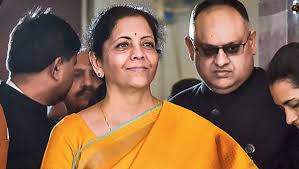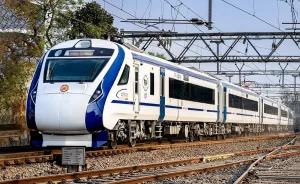Jayati Ghosh
It’s finally time to call the bluff: the Union budget has become a completely meaningless—even misleading—exercise. Those of us who take either the pronouncements or the numbers mentioned on expected revenues and projected spending in the budget documents seriously are being made fools of. So we should stop wasting our time poring over the numbers and pretending that these suggest any direction for the Union government’s fiscal policy, because they don’t.
It’s obviously a shame that this should be the case, especially since this year the finance minister subjected the people to the longest-ever budget speech in Indian history, which (despite its inordinate length) actually provided no vision or plan for the recovery of the Indian economy. There was some amount of tinkering with tax rates and other concessions: all in the expected direction of favouring large capital, including foreign portfolio investors, and richer individuals within the country. Meanwhile, the crucial need to do something immediately to revive mass consumption demand by significantly increasing public spending in areas like agriculture, rural development and food was simply ignored.
But apart from the lack of vision, what is more worrying is that the numbers being provided in the budget are now completely unreliable, and we cannot place any reliance on them. There was always some discrepancy between budget estimates, revised estimates and actuals over the years, but such differences were relatively minor. Under the National Democratic Alliance government, and especially since the previous year, the differences have become so vast that the budget estimates tell us nothing about what will actually be received or spent by the government. So the documents tabled in Parliament are in effect of no use whatsoever.
Part of the reason for this is because the timing of the budget has been moved forward by a full month; so it is presented on the first day of February rather than the last as used to be the case. Because of this, official data on receipts and expenditures are only available until the end of December and, therefore, the revenues and expenditure for the last quarter of the fiscal year simply have to be guessed at. This has allowed the government to make extravagant projections for the final quarter, even when there is absolutely no justification for doing so. So the revised estimates presented in the budget may or may not be met even in the current year—and the chances are that both revenues and spending will be significantly lower than the estimates.
Consider revenues, for example. Last year, the budget presented revised estimates for tax revenues that exceeded the eventual actual figure by a whopping Rs 1,67,195 crore. While the revised estimate could fool the public, obviously the finance ministry knew what was going on, so it cut back on public spending from January onwards and enforced huge cuts in certain areas. The biggest cuts were in food and public distribution, agriculture and transfers to state governments—in other words, precisely the areas that needed the largest increases in spending.
The same thing appears to be happening this year, possibly because the Central government got away with this remarkable sleight of hand when, in fact, the finance minister should have been called out for lying to Parliament. This year, once again, it is clear that very over-optimistic claims are being made for revenues in the final quarter of the year, if we compare with the amounts collected by the end of December 2019. Total receipts of the Central government were only Rs 11.78 lakh crore at the end of December but the budget claims that in the next three months the government will pick up another Rs 15.21 lakh crore—in other words, more than double of what has been collected so far! Similarly, tax revenues are supposed to increase by more than 66 per cent, with corporation taxes projected to more than double, and income taxes to go up by nearly 80 per cent, just in the last quarter of this year. Obviously, all this is not going to happen, and the finance ministry knows that as well as anyone else. So the chances are that the government has already started cutting back on essential spending that affects the lives of the people.
Some of this is already evident. For example, spending on agriculture has been only 60 per cent of the budget amount over nine months of the year, and it is likely that there will be a further clampdown on such spending. Ditto for health, education and other areas that the government likes to talk about but provides little money for.
The outlay on the food subsidy has been cut from the budget estimate of Rs 1.84 lakh crore to Rs 1.08 lakh crore. This really means that not only will states not receive the required inputs to ensure food distribution, but the Food Corporation of India will continue to suffer losses and have to take on debt because it is simply not getting paid by the Central government. The MGNREGA—a crucial programme in these times of unemployment and rural distress—is also being starved of funds. It is estimated that just to be maintained at its current level, a budgetary allocation of Rs 1 lakh crore is required, but this budget actually cuts the existing inadequate projected spending of Rs 71,000 crore by a further Rs 9,500 crore for the coming year.
State governments are also being starved of funds by the Centre, which is appalling because they are the ones responsible for most of the spending that affects people’s lives. Not only has the Centre not paid the GST compensation fund that is legally due to them, but it has also announced that henceforth such payments will depend on what is raised from the cess for that purpose rather than the agreed upon payments. And it has not transferred even the regular share of GST payments due to the states, creating mini fiscal crises in many states.
Similarly, the much-vaunted infrastructure boost is mostly hype. Much of the supposedly big increase in capital expenditure relates to payments to the Bharat Sanchar Nigam Limited and the Mahanagar Telephone Nigam Limited for refund for 4G charges and shift in categories because Jammu and Kashmir and Ladakh have become Union territories.
The bottom line is that despite all the smoke and mirrors and blatant attempts to fudge the data, it is clear that this budget will not provide the required fiscal stimulus to kick-start the economy. The few benefits of this budget will go to a handful of crony capitalists and, possibly, some foreign portfolio investors who will face much reduced taxation. The people of India will continue to suffer terrible and worsening economic conditions, and have to be distracted by cries of nationalism and majoritarian triumphalism.
(Jayati Ghosh is Professor of Economics at the Centre for Economic Studies and Planning, Jawaharlal Nehru University, Delhi.)
C.P. Chandrasekhar adds:
Two numbers stand out in the Budget, which indicate that government if it wished could have pulled off a stimulus to the economy. First is an increase in the government’s non-tax revenues from communication services, from Rs 59,000 crore in 2019–20 to Rs 1,33,000 crore in 2020–21. This is because of the Supreme Court judgement on the underpayment of dues on account of licence fees and spectrum charges by telecom companies. But the government has already eroded this benefit. That is because in September 2019, in the name of stimulating the economy and accelerating high growth, the government cut the corporate tax rate sharply, handing over a bonanza to the corporate sector amounting to close to Rs. 1.5 lakh crore. While that measure may have boosted the profits of big business, it did little to push up growth. On the other hand, the concession has resulted in a loss of revenues larger than what the telecom windfall offered.
The second significant number in the Budget is the projection that the government’s receipts from disinvestment of public sector equity in 2021 will amount to a staggering Rs 2,10,000 crore. This includes receipts from the privatisation of non-financial sector public enterprises to the tune of Rs 1,20,000 crore and another Rs 90,000 crore from sale of equity in public sector banks and financial institutions like the Life Insurance Corporation. This rush to privatise is to begin even earlier, as the government seeks to get more from sale of assets this year as well. In the budget for 2019–20, the government had provided for receipts from privatisation of Rs 1,05,000 crore. As of the end of January 2020, it had managed to mobilise only around Rs 18,000 crore. Yet, the revised estimates for this fiscal year (2019–20) provided in the Budget papers say that receipts from disinvestment would amount to Rs 65,000 crore. If such large sums are to be mobilised in the next two months and in the coming year, some of the best assets in the public sector have to be put on sale.
And yet, Finance Minister Nirmala Sitharaman’s budget does not see any increase its expenditure levels. According to the budget papers, Central government expenditure in 2019–20 would amount to 13.6% of GDP. The figure for 2019–20 is projected at a marginally lower 13.5% in 2020–21. That amounts to an effective standstill on the spending front.
Nor is the government planning to spend money on projects and programmes that will help the poor already badly hit by demonetisation and the growth slowdown.
In sum, this budget does nothing for either growth or welfare. It perhaps does not intend to. The government has possibly given up on being the locomotive that can pull the economy out of its descent into recession. Given the numbers, it is clear that in the short run the only way out was to borrow substantially more and spend in order to raise demand for the private sector and spur investment and growth. But the finance minister seemed comfortable declaring that the fiscal deficits in 2019–20 and 2020–21 would deviate from the targets of 3.3% and 3% of GDP respectively only marginally to touch 3.8% and 3.5%. Although these numbers are suspect and the deficit is likely to be much higher, the obsession with deficit control has implied that this budget does little to address the recession.
(C.P. Chandrasekhar is a former professor of economics at Jawaharlal Nehru University, New Delhi.)




